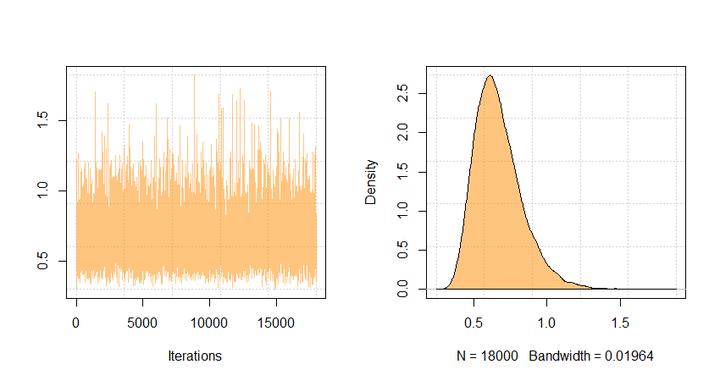Enhancing Computational Efficiency in High-Dimensional Bayesian Analysis: Applications to Cancer Genomics
 MCMC traceplot and density
MCMC traceplot and densityAbstract
In this study, we present a comprehensive evaluation of the Two-Block Gibbs (2BG) sampler as a robust alternative to the traditional Three-Block Gibbs (3BG) sampler in Bayesian shrinkage models. Through extensive simulation studies, we demonstrate that the 2BG sampler exhibits superior computational efficiency and faster convergence rates, particularly in high-dimensional settings where the ratio of predictors to samples is large. We apply these findings to real-world data from the NCI-60 cancer cell panel, leveraging gene expression data to predict protein expression levels. Our analysis incorporates feature selection, identifying key genes that influence protein expression while shedding light on the underlying genetic mechanisms in cancer cells. The results indicate that the 2BG sampler not only produces more effective samples than the 3BG counterpart but also significantly reduces computational costs, thereby enhancing the applicability of Bayesian methods in high-dimensional data analysis. This contribution extends the understanding of shrinkage techniques in statistical modeling and offers valuable insights for cancer genomics research.